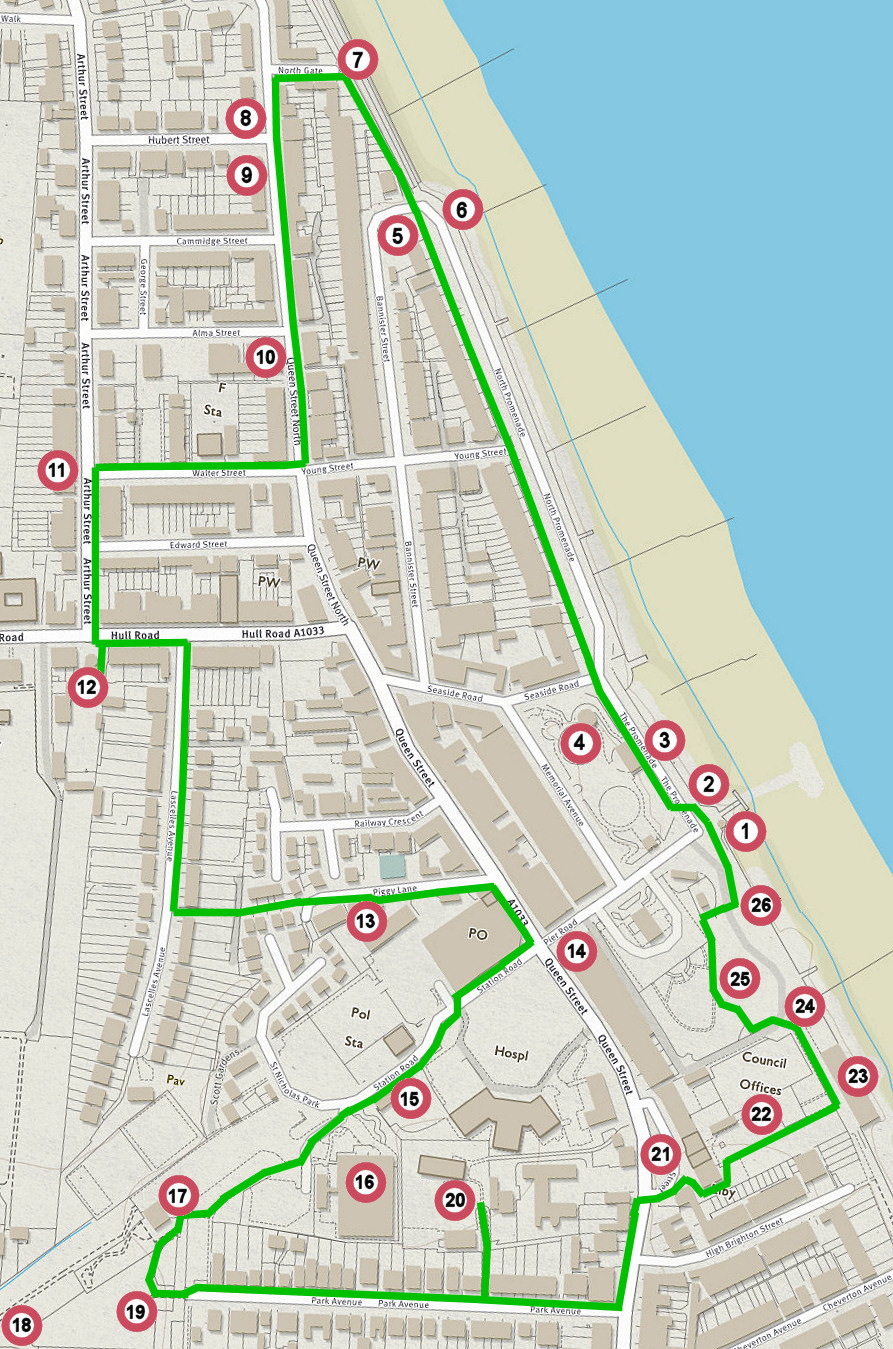Withernsea Circular Town Walk (1 3/4 miles, 2.9km ) Suitable for prams, wheelchairs, walking and cycling.
1)
This is a circular walk around Withernsea, so you can start at any point, but this guide will start at Pier Towers on the central promenade.
Work began on Withernsea Pier in 1875 with Thomas Cargill as the engineer. By August 1877 the work was completed having cost £12,000 to build. It opened to the public summer 1878 charging 1 penny for admission. At the pier entrance, a large gateway modelled on Conwy Castle was erected, and its ornate iron girders reached 1196 ft across the beach out to sea. Many ships collided with the pier over the next few years. In 1890 it was hit by the fishing boat "Genesta" destroying more than half the pier. In 1893 it was struck by the Grimsby bound "Henry Parr". The piles of the pier were knocked down span after span until there were only 50ft remaining of the once grand pier. The pier towers are all that remains of this once grand structure.
In front of the towers is a model of the pier describing its brief and catastrophic history.
Plans are currently being considered to re-build the Withernsea pier.
Plans for the new Withernsea Pier are on display in the North Tower
|
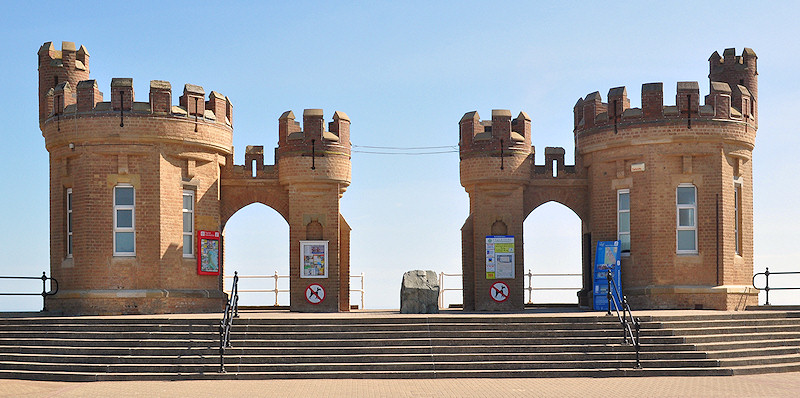 |
2)
On the promenade wall, at the north end of the steps up to the pier, there is a plaque comemorating the 13th century Church of St Mary the Virgin.
The church was lost to coastal erosion and now lies approximately 1 mile offshore. Legend tells of two sisters building separate churches after arguing over the style of a jointly funded church, one wanted a spire, the other a tower. These two buildings became known as the Sisterkirkes. The sea eventually claimed both of the churches, eroding the church of St. Mary the Virgin Withernsea around 1444, & St. Peter's Church Owthorne between 1786 and 1824. Stones from the churches were reused in the building of St. Nicholas's Church Withernsea and St. Mary the Virgin Rimswell. |
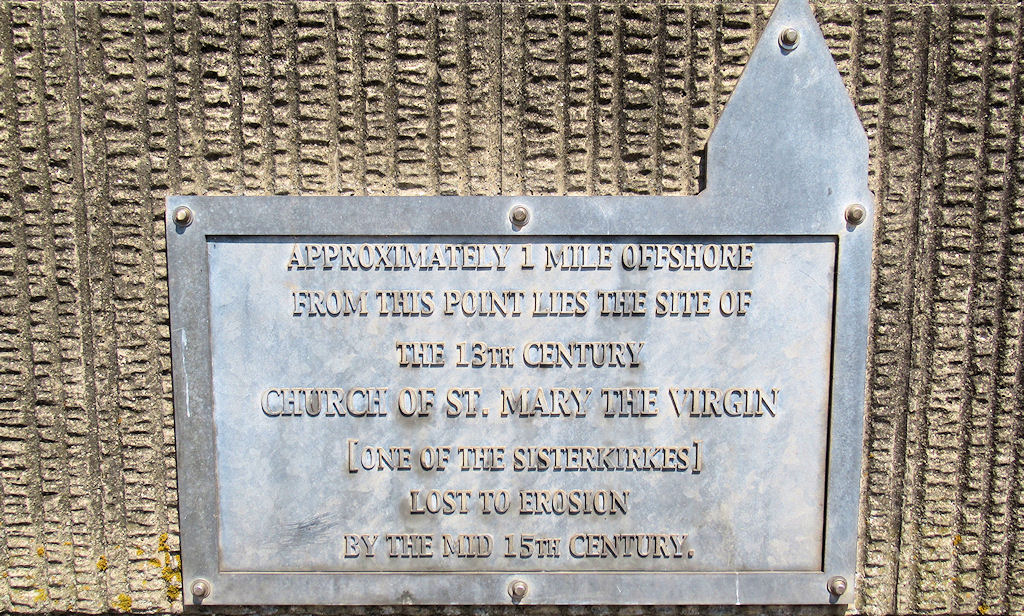 |
3)
Walk north along the promenade. Cross the road and take a look at the information about the lost Villages and the Sisterkirkes on the Valley Gardens wall either side of the toilets.
The toilet block was built in 1909 by the Withernsea Urban District Council. The clock tower is a later addition.
|
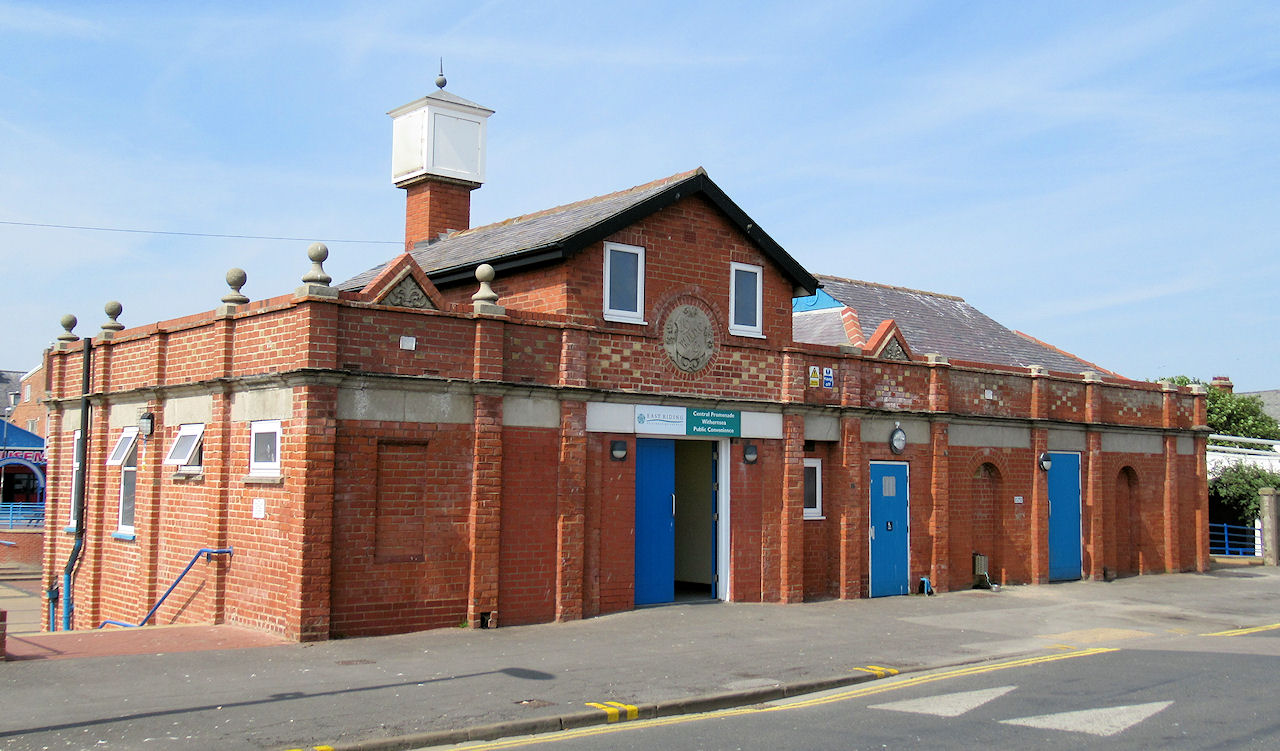 |
4)
On your left is Valley Gardens, a beautifully landscaped open space with seating, children’s play equipment and a stage. The Valley Gardens is the venue for the popular annual Withfest and throughout the season its a hub for events in Withernsea.
Originally this sunken garden was the Withernsea Mere. As the coastal erosion progressed, the mere drained into the sea. Sheltered from the wind, a formal garden was constructed in this depression and was opened in 1910. More information about the history of the gardens can be found here. |
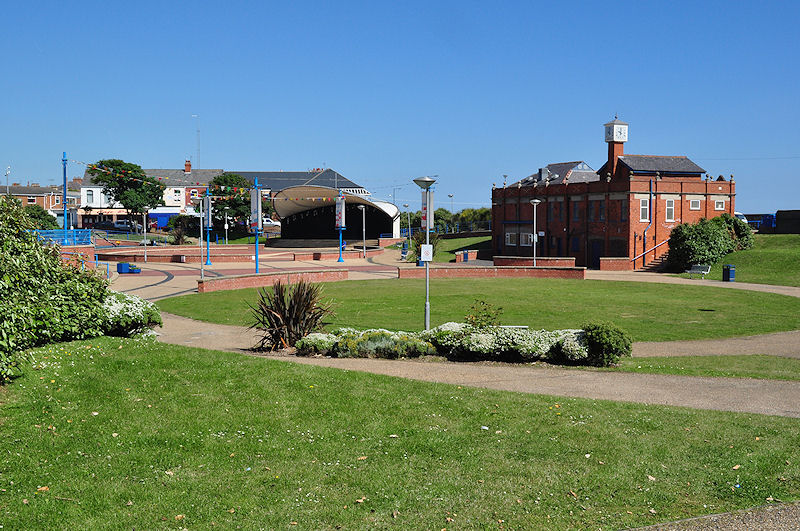 |
5)
Carry on walking north along the promenade.
Out at sea is the Westermost Rough Wind Farm. It is an offshore wind farm 8 kilometres (5.0 mi) north east of Withernsea. The farm covers an area of approximately 35 km2 (14 sq mi) with a generation capacity of approximately 210 MW. It became operational in May 2015.
As you pass Young Street, there is a zig zag walkway down to the promenade. This is the location of the former bandstand which was built in 1901. More information about the history of the promenade and the bandstand is available here.
Walk a little further north and you will see the public house Captain Williams on your left. This establishment is now open to the public after years of restoration. This building was formerly known as the Marine hotel. Before that it was called St Leonards, and was built for Captain Williams in 1904.
|
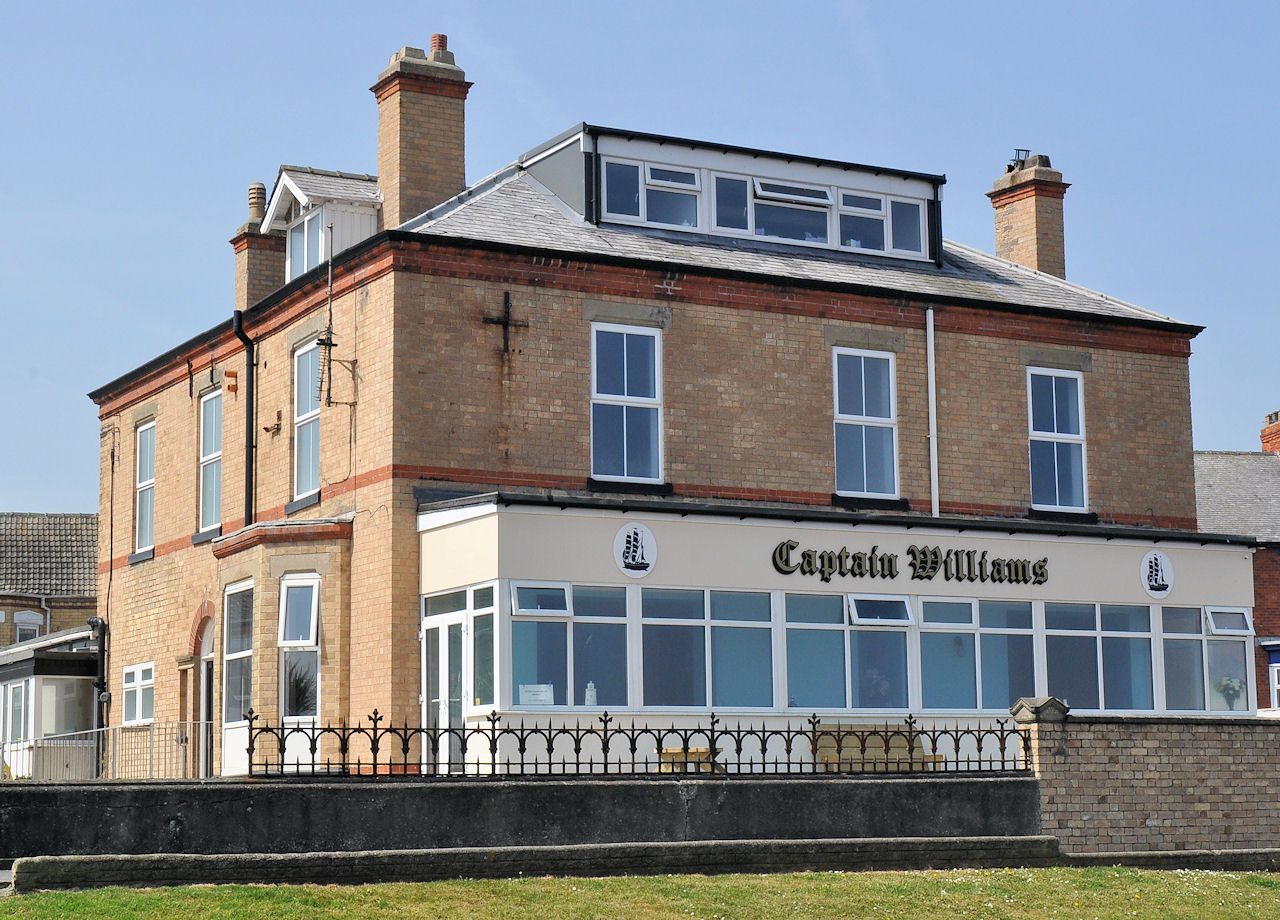 |
6)
On the sea wall where the promenade curves round to the left there is another plaque to commemorate the second sisterkirke, the Church of St Peter's, which now lies several hundred yards offshore.
This is where the original promenade ended in 1900. In 1910 an extension to the promenade was built running north for a further 180 yards past the houses of Marine Parade to the end of Queen Street. In 1960 the promenade was extended again to protect what is now Seathorne.
|
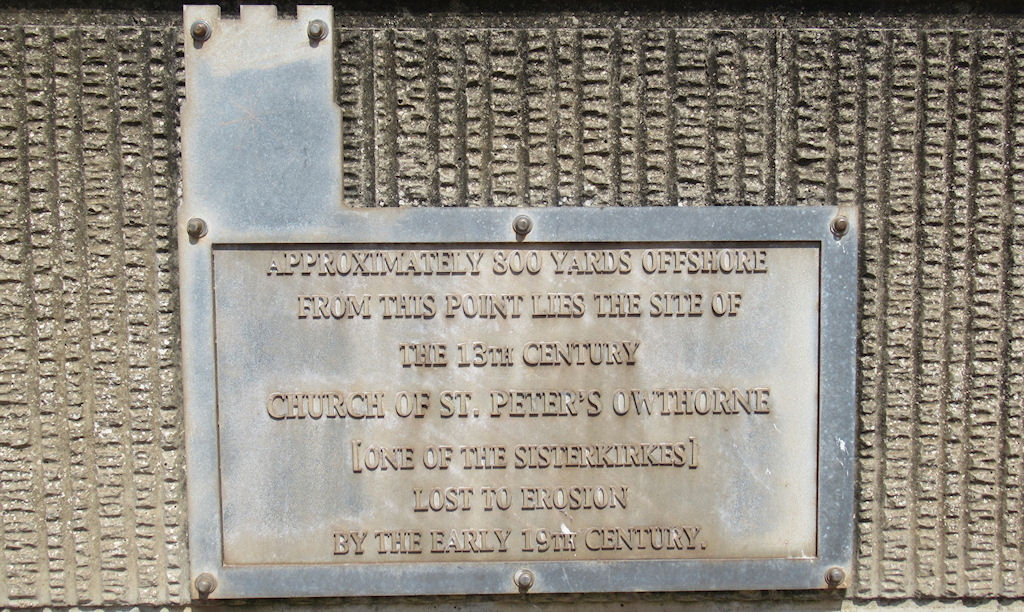 |
7)
Carry on walking north up the hill along the promenade.
The next road on the left is North Gate, now the shortest road in Withernsea. The corner house, which is constructed of cobbles from the beach, was built back in the 19th century and has been extended several times. |
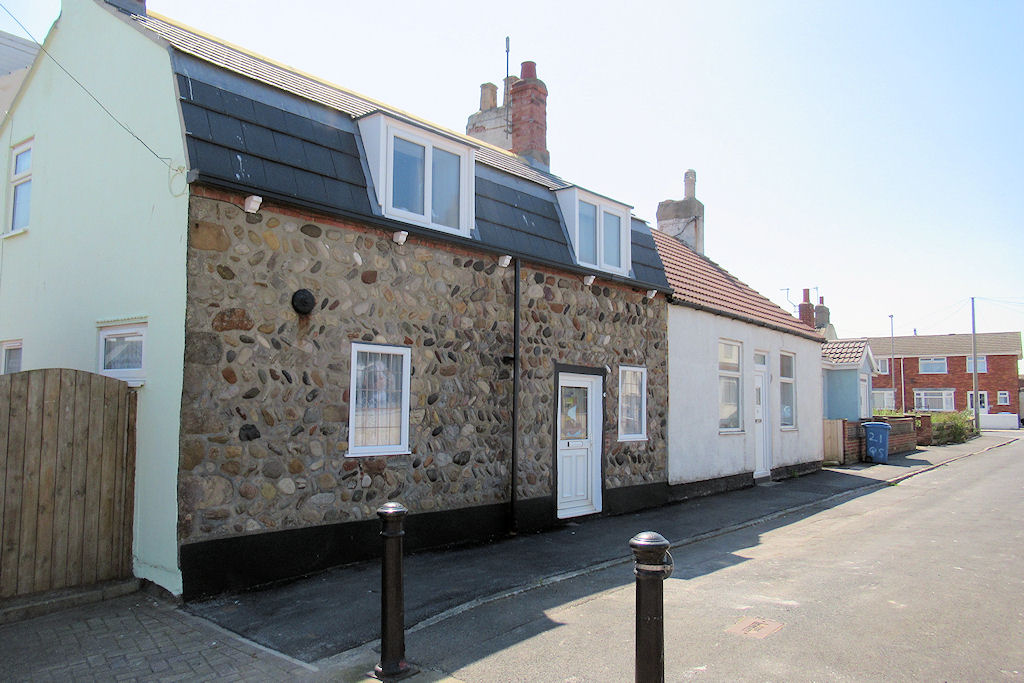 |
8)
Walk to the end of North Gate and turn left into Queen Street. The building on the corner of Hubert Street and Queen Street used to be St Huberts School.
If you look west down Hubert Street, you will see an octagonal wooden turret surrounding the chimneys belongings to two houses. It is reputed to have been built as a lookout tower for the residents 100 years ago. |
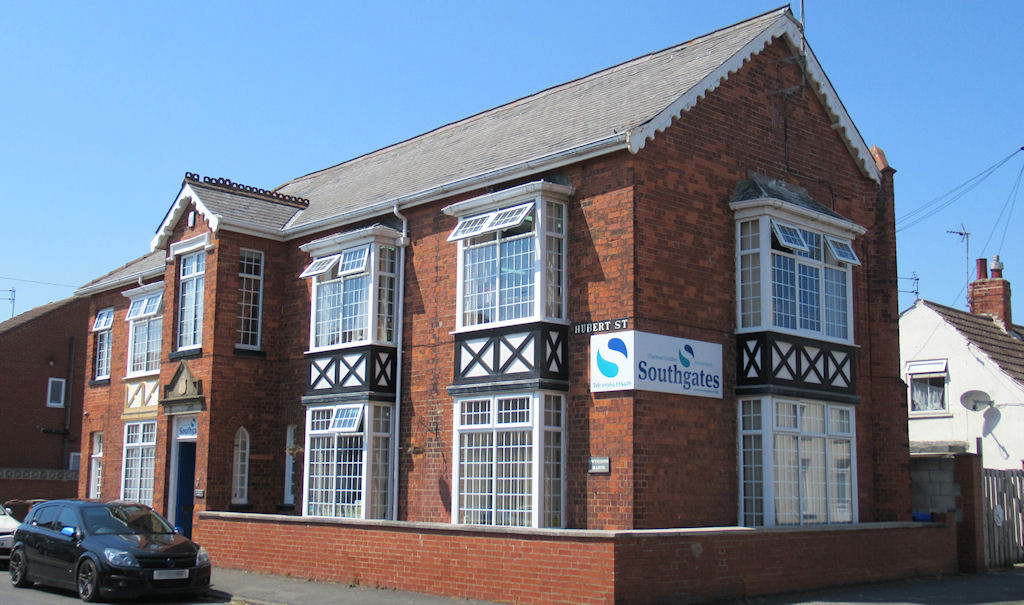 |
9)
Carry on walking down Queen Street back towards the town centre.
Notice the post box built into the side at No 4. |
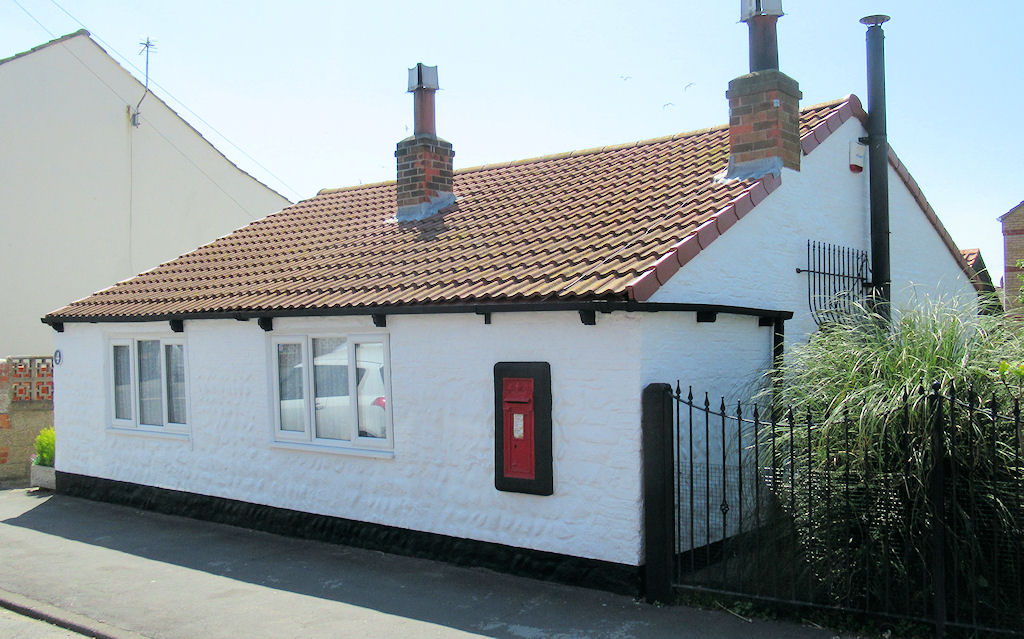 |
10)
A little further down Queen Street you will pass The Alma.
The pub is believed to be named after the Crimean War battle of that name, fought on September 20th 1854. |
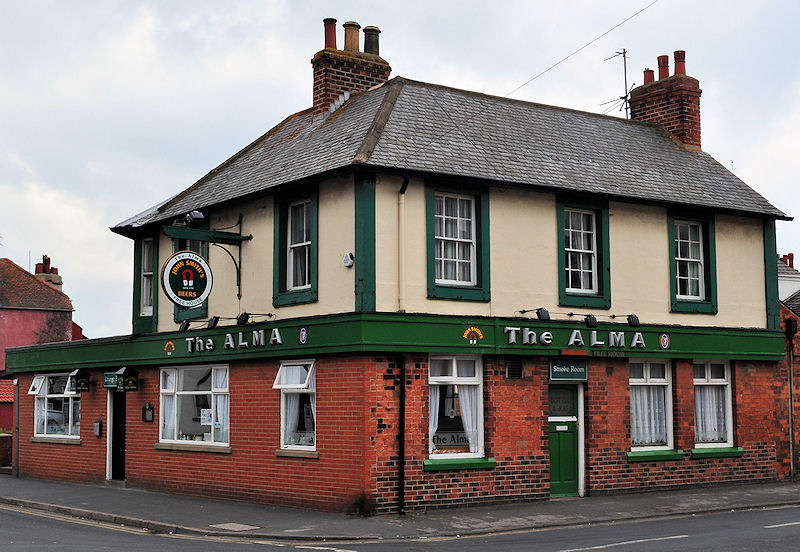 |
11)
Carry on down Queen Street and turn right into Walter Street. Walk down past the fire station to the end of Walter Street. Directly on the opposite side of the road is a building with large glass windows. This is the Old lifeboat station, which was built in 1862. The station was moved in 1883 to Seaside Road before eventually getting a new building on South Promenade at the end of South Cliff road.
|
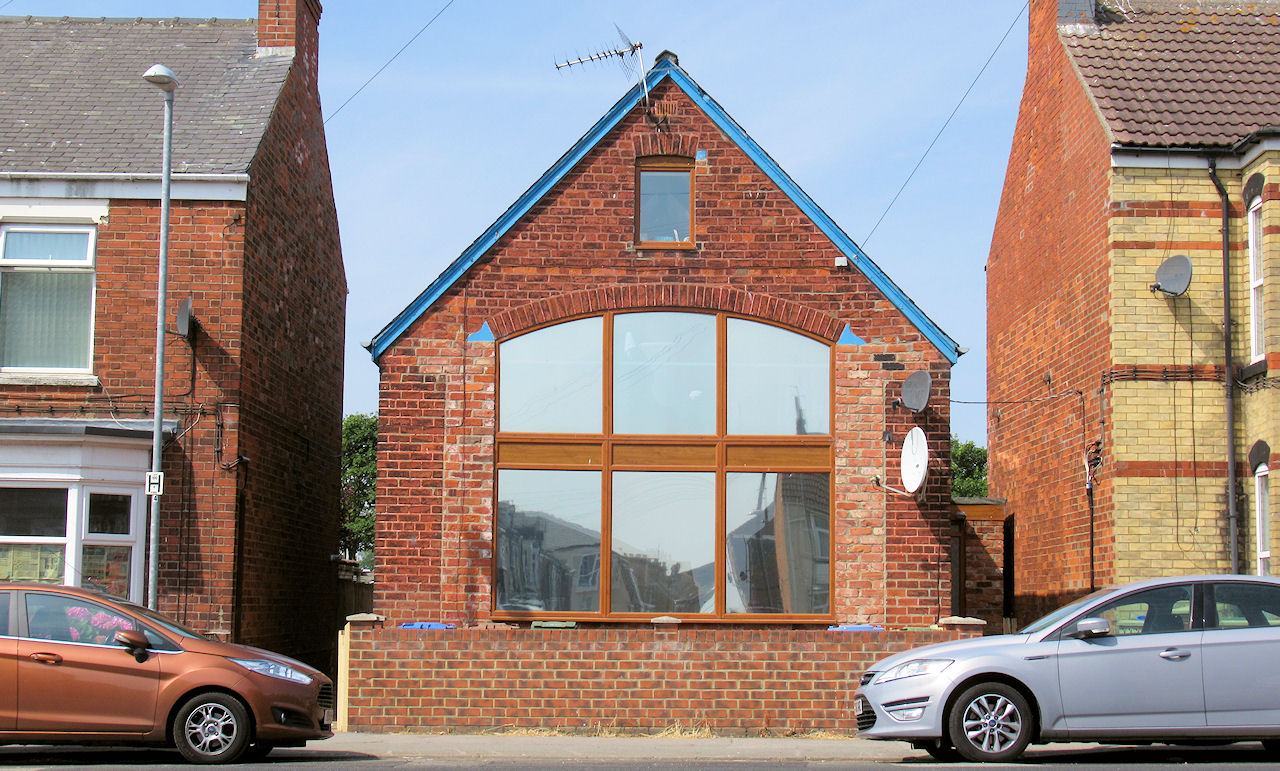 |
12)
Turn left into Arthur Street. You will now see Withernsea Lighthouse straight in front of you.
Today the Lighthouse is a museum featuring local history and seafaring memorabilia. It also pays tribute to glamorous Hollywood ‘Kay Kendall’ who was born in Withernsea in 1927. The views from the lamp room in the Withernsea Lighthouse are breathtaking, especially after climbing 144 steps. At the back of the lighthouse is a sheltered garden with tea rooms serving hot and cold drinks and a variety of food. At different times there are various exhibitions on display here.
Historic pictures of the lighthouse and of the lifeboat crew can be found here. |
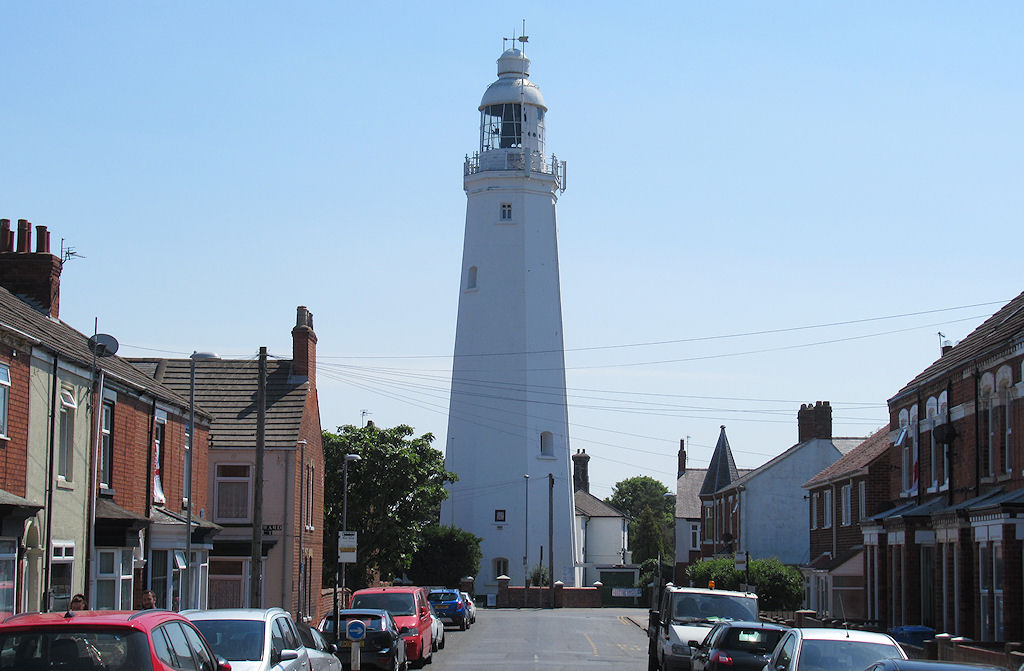 |
13)
From the lighthouse walk down Hull Road towards the town centre, take the next right into Lascelles Avenue. About 2/3 of the way down, turn left down a footpath leading to Piggy Lane (along the blue wall).
This takes you through to Piggy Lane Market. (Open most days, but not all)
|
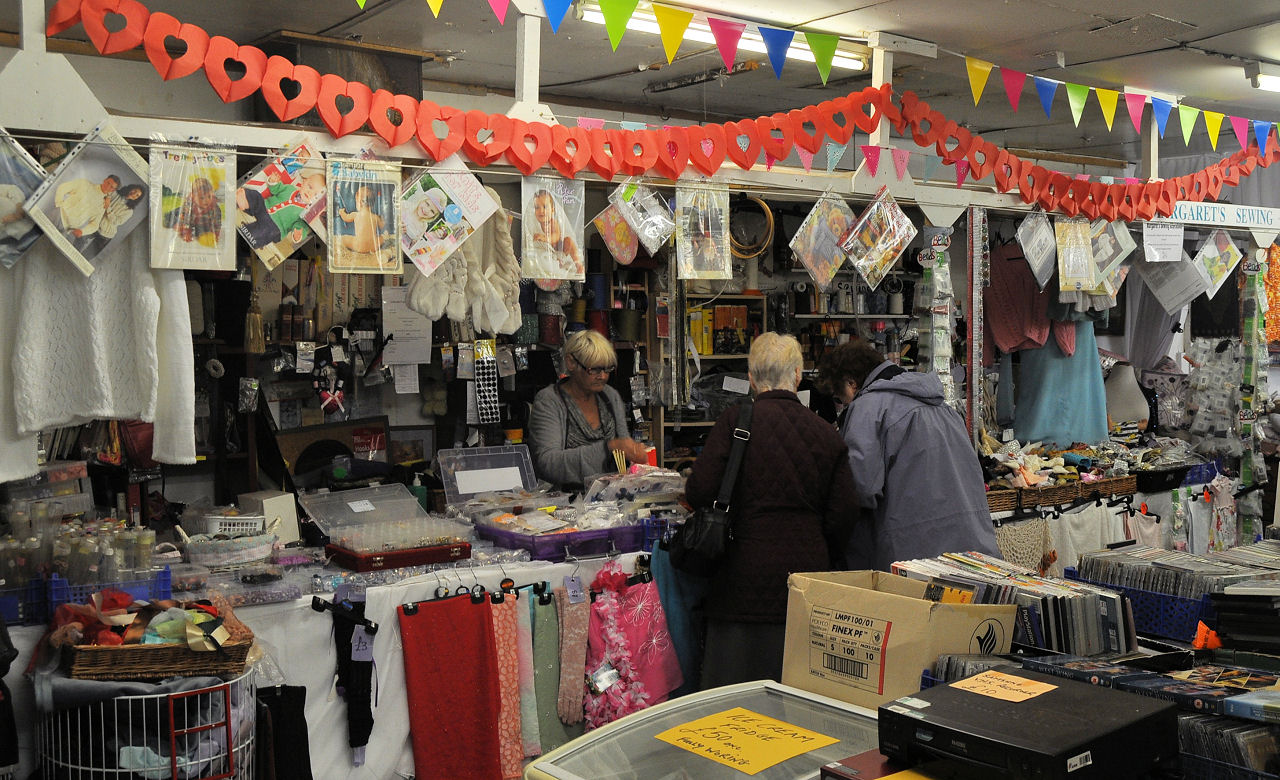 |
14)
Walk up Piggy Lane past the public toilets and onto Queen Street. Turn right towards the traffic lights. The large building on the opposite side of the junction is the Meridian Centre.
Formally the old Co-op, the building used to have white tiles all down the back with the word, “Co-op” printed on them. It then became the Withernsea Superstore before being converted to a pub named Remars with a night club called Eldons upstairs. The Meridian Centre is now a community hub offering spacious modern facilities for private functions and local events. There are also three function rooms, a HD Cinema and a fully licensed bar. It is also home to Withernsea Town Council.
There is a picture of the old superstore at the bottom of this page. |
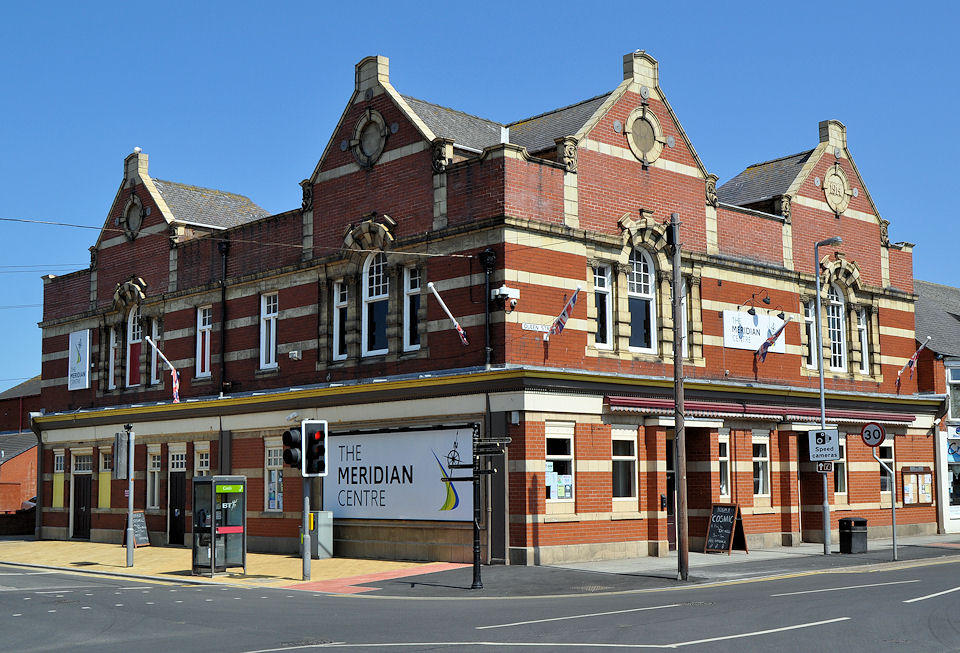 |
15)
Turn right at the traffic lights and head down Station Road.
As you walk down the road, take a look into the hospital grounds. This used to be the site of the Queens Hotel which later became the convalescent home, and finally the Withernsea Hospital.
On the left, just past the police station is Teenyworld Nursery. This is the only remaining building from the Withernsea railway station where trains would arrive full of holiday makers from Hull. The railway line was constructed as an 18 mile single track line and had its grand opening on the 27th June 1854. The last passenger train left Withernsea station on 19 October 1964. Goods traffic continued to use the whole line until 3 May 1965.
Pictures of the old Withernsea railway station and Queens Hotel can be found here. |
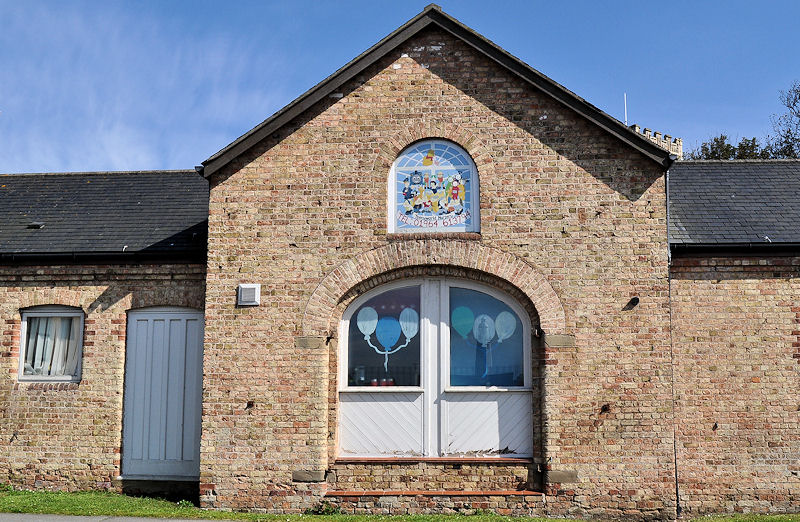 |
16)
As you carry on down Station Road, you will see the Pavilion Leisure Centre on your left. This houses a 25m swimming pool with one of the longest water slides in Yorkshire, a sports hall, squash courts, gym, rifle range and a cafe.
The Grand Pavilion was built in 1937 with the largest sprung dance floor in the north and boasting a large curved stage. There was dancing, concerts and live entertainment. The kitchens were capable of putting on a meal for up to 1000 people. Special trains were laid on to bring crowds of people from Hull, and to return them after the dance evenings. More information about the Grand Pavilion here. |
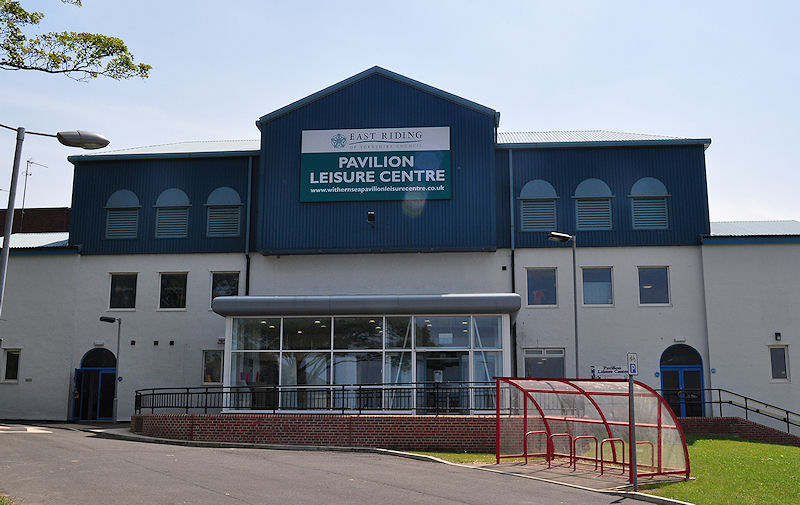 |
17)
Walk across the large car park towards the hut at the far end. This building is simply called The Hut and offers play session and activities for children of all ages. |
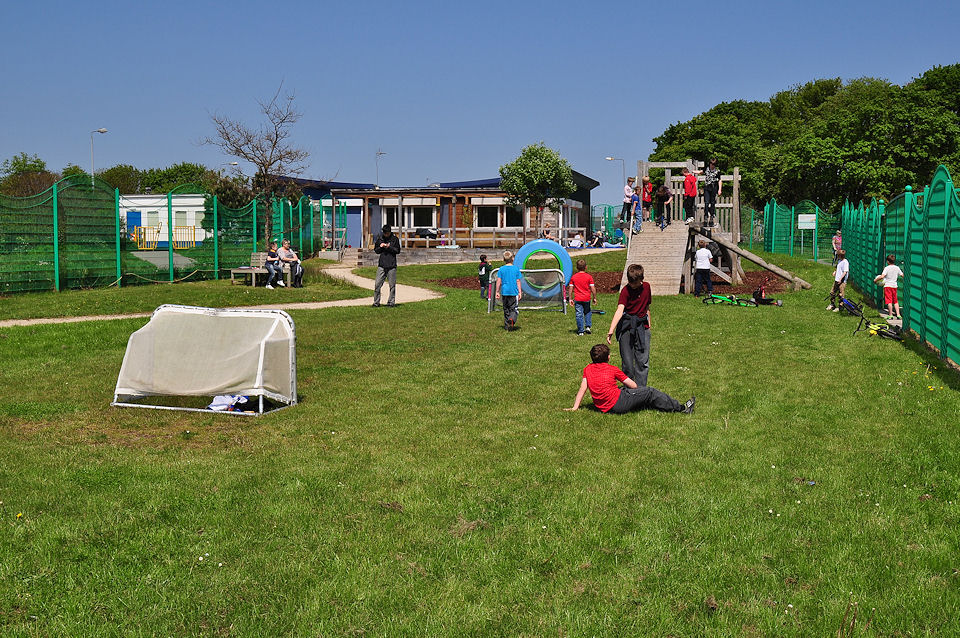 |
18)
Round the right hand side of The Hut it is still possible to walk down the old railway line towards Patrington. About 400 yards down the track is a skatepark. |
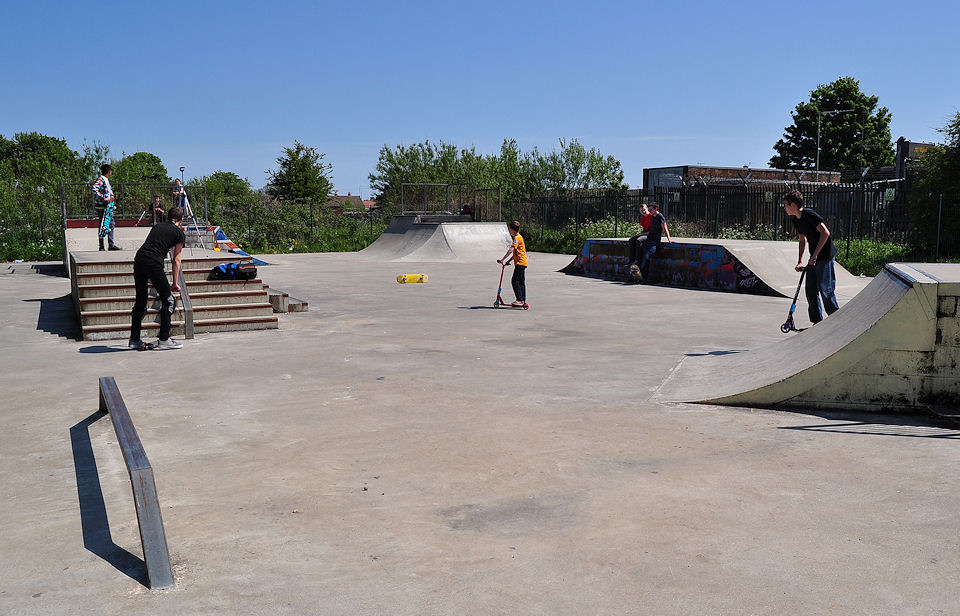 |
19)
If you went down to have a look at the skate part, head back to The Hut. Go through the gate next to The Hut and enter the Millenium Green Park. |
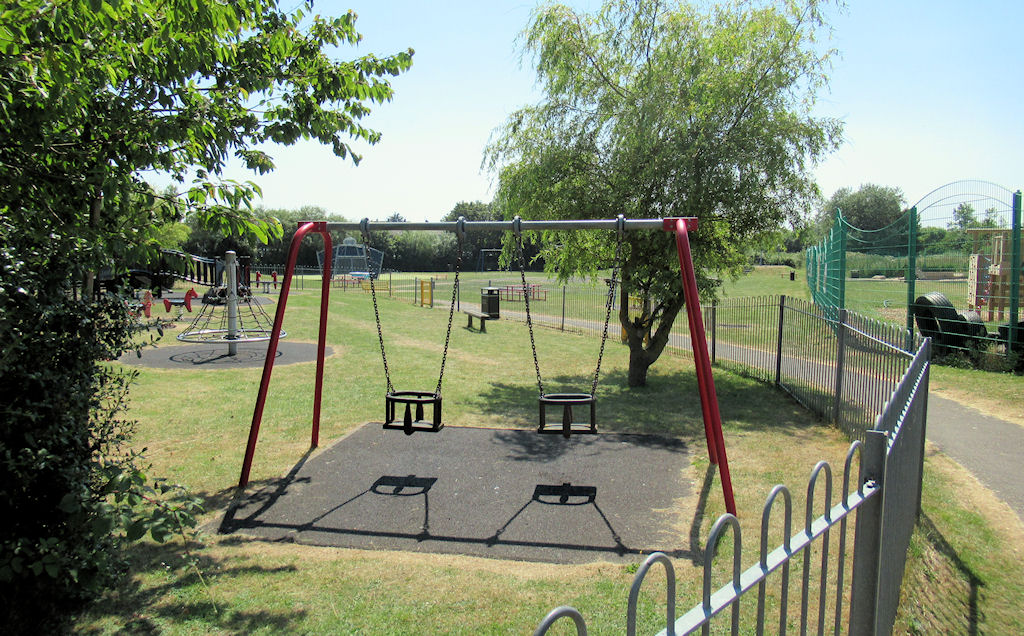 |
20)
To continue the walk, exit the park and walk up Park Avenue. About 2/3 of the way up, there is a road to the left leading to St Nicholas's Church.
The original St. Nicholas's Church was built in 1448 and fell into ruin having been hit by a number of storms. After Owthorne Church was claimed by the sea, a restoration appeal was launched to rebuild the Church. In 1987 the Church became a Grade II listed building. Due to mounting maintenance costs, St Nicholas's Church was officially closed in 2014.
Several famous people are buried here, like Florence Cavell and George Cookman. A history of the Withernsea Churches along with a complete list of all the graves at St Nicholas can be found here. |
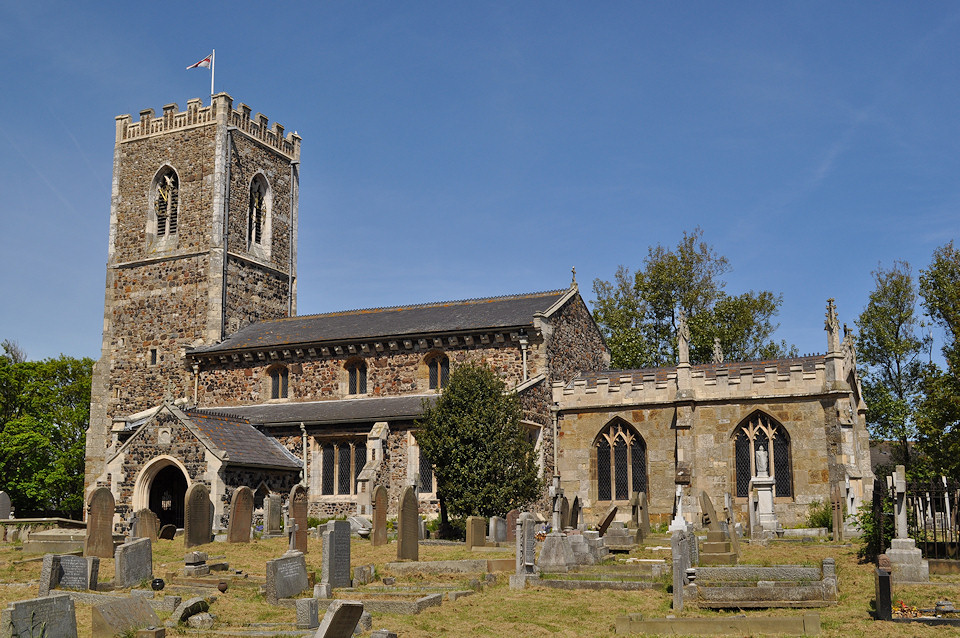 |
21)
Go back to Park Avenue and walk up to Queen Street. Turn left and follow the road past High Brighton Street. A little further on the right, turn into Queens Terrace. You will see the Withernsea Centre Library in front of you.
To the left is the Jubilee Lamp which was erected to commemorate Queen Victoria's Diamond Jubilee in 1897. It was originally placed at the junction between Queen Street and Seaside road, then moved to pier towers before finally being placed in its current position. Historic pictures of Queen Street including the lamp in its original location can be found here.
Just to the right of the Withernsea Centre is the old Municipal buildings. This was originally Cheverton Brown’s house. He was a prominent figure in Withernsea, and was the chairman of the council on four occasions between 1901 and 1912. |
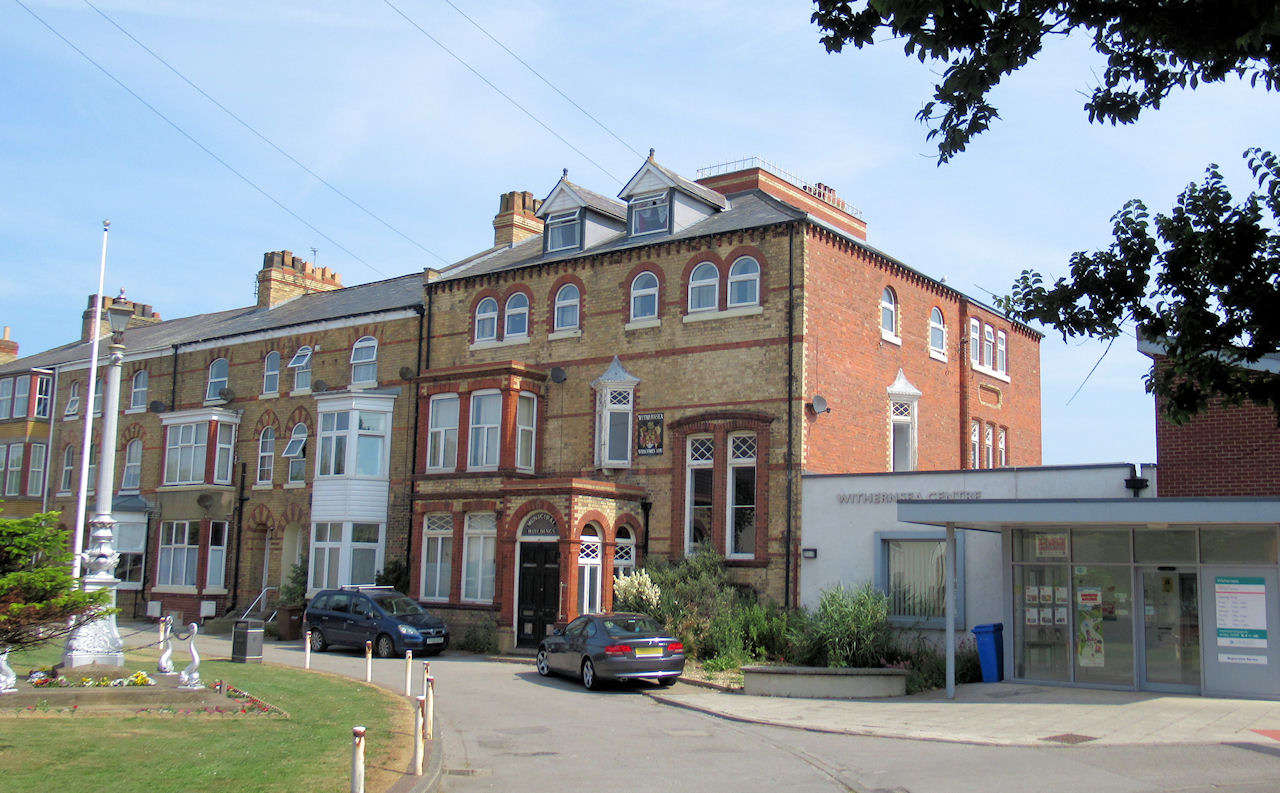 |
22)
Go round to the back of the library and you will enter the Italian Gardens.
On your left is a war memorial. (more information needed about war memorial and italian gardens)
Old pictures of the magnificent Italian gardens and the sun lounge at the end can be found here. |
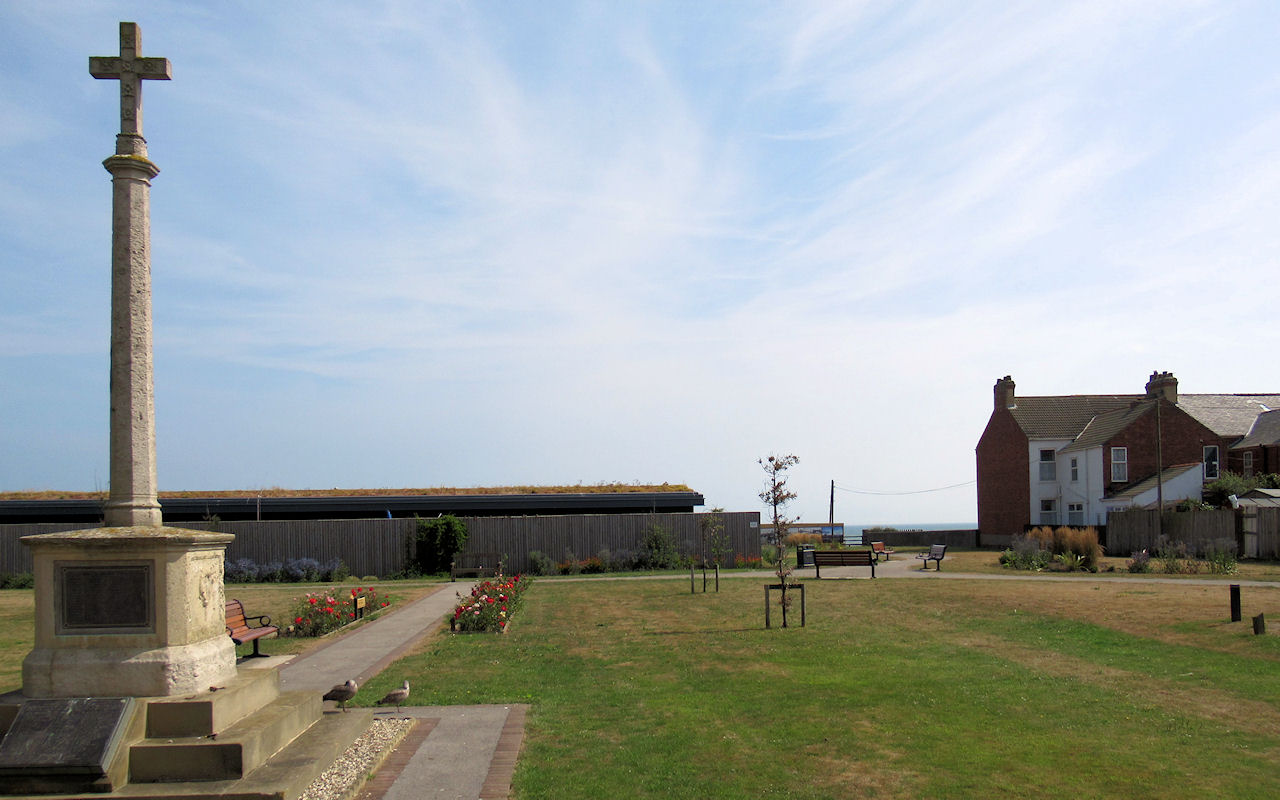 |
23)
Stroll through the gardens until you reach the historical picture boards at the other end.
The 27 large pictures depicting the history of Withernsea surround the site of the old Teddys Night club. Before it was a night club, it used to be the sun lounge.
Further information about these large pictures can be found here |
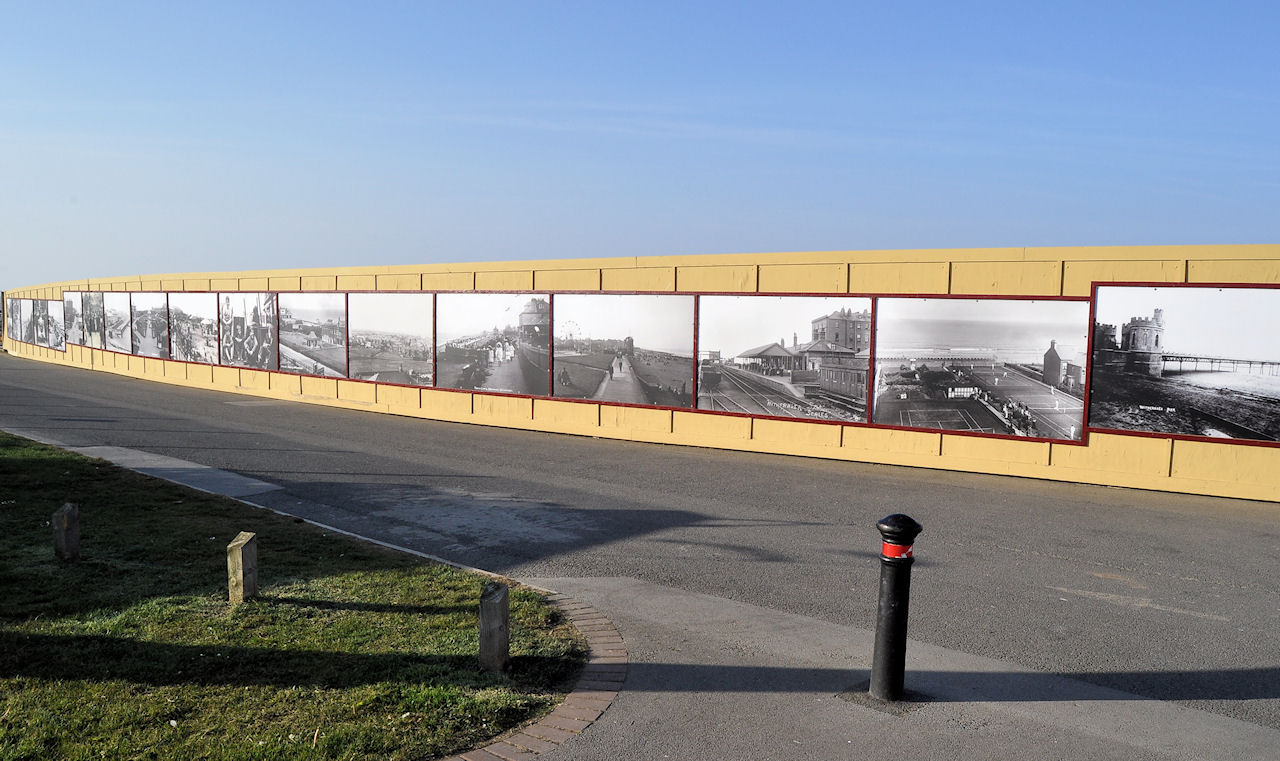 |
24)
Turn right and walk north with the pictures on your right and the commercial fishing compound on the left. Notice the wave sculpture along the fence.
On the corner of the fishing compound is the restored fishing coble the "Wolf"
Please feel free to try it out, no danger of getting sea sick! |
 |
25)
Go across the road and enter the beautiful Memorial Gardens. If you brought a picnic, this is the perfect place to have it. There is a 2nd World War memorial in the gardens.
These gardens were the site of the Withernsea Pleasure Grounds with a boating lake and fairground rides. Pictures of the pleasure grounds are available here. |
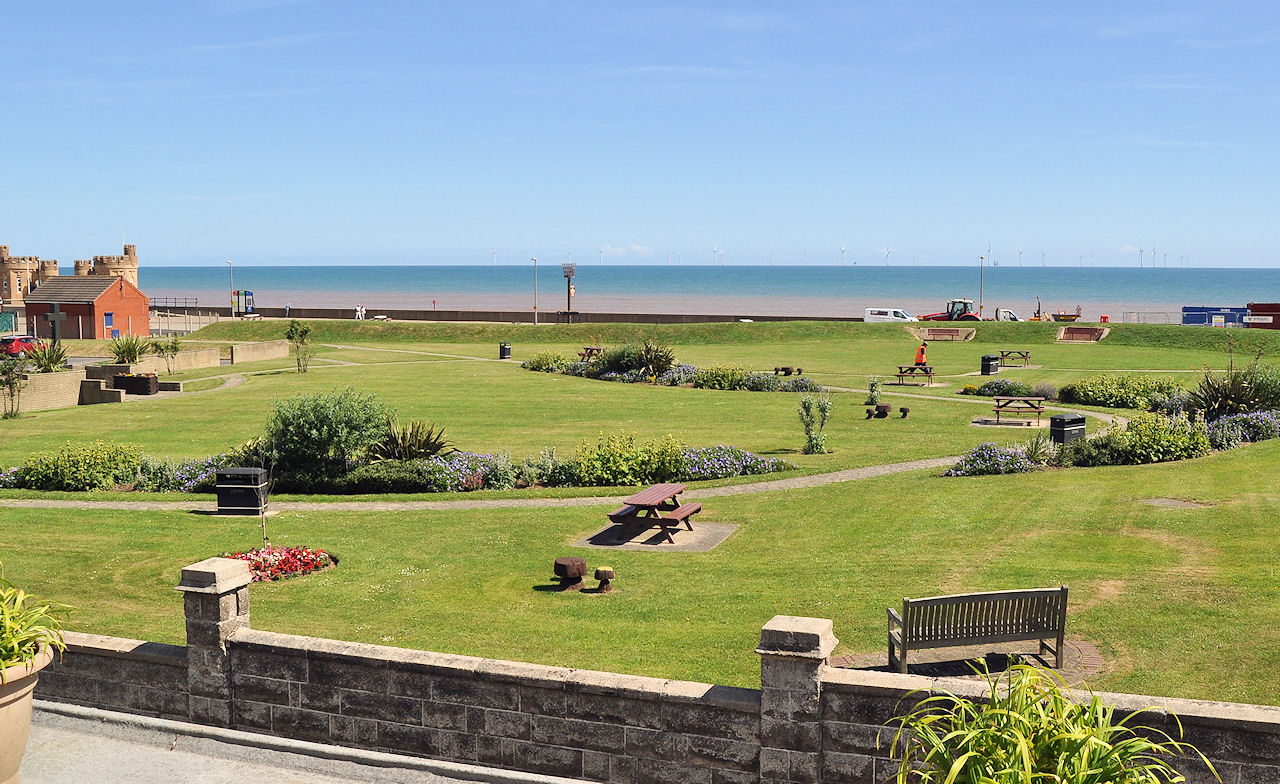 |
26)
Head back onto the promenade. There is a path through at the end of the grass mound if you don't fancy climbing over it. We end our town walk at the newly installed Pavement Fountains.
The beacon is lit on special occasions. The Withernsea coat of arms hangs from the beacon.
Sit down and take a well deserved rest while the kids play in the fountains!
Pictures of the beacon lit can be found here |
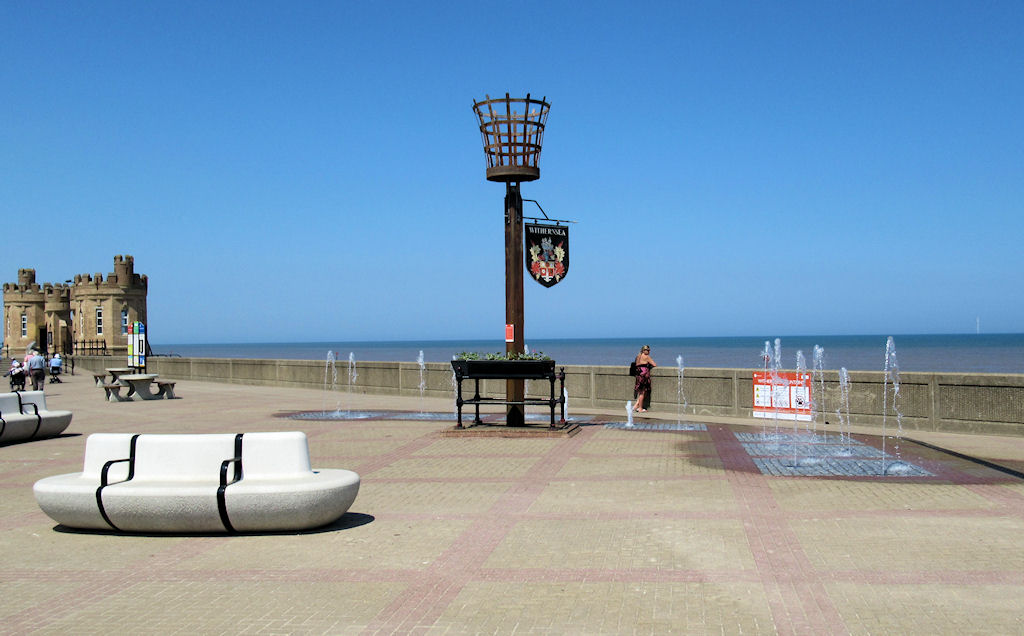 |
We hope you enjoyed the walking tour of Withernsea. Any comments or suggestions please e-mail webmaster@withernsea1.co.uk.
